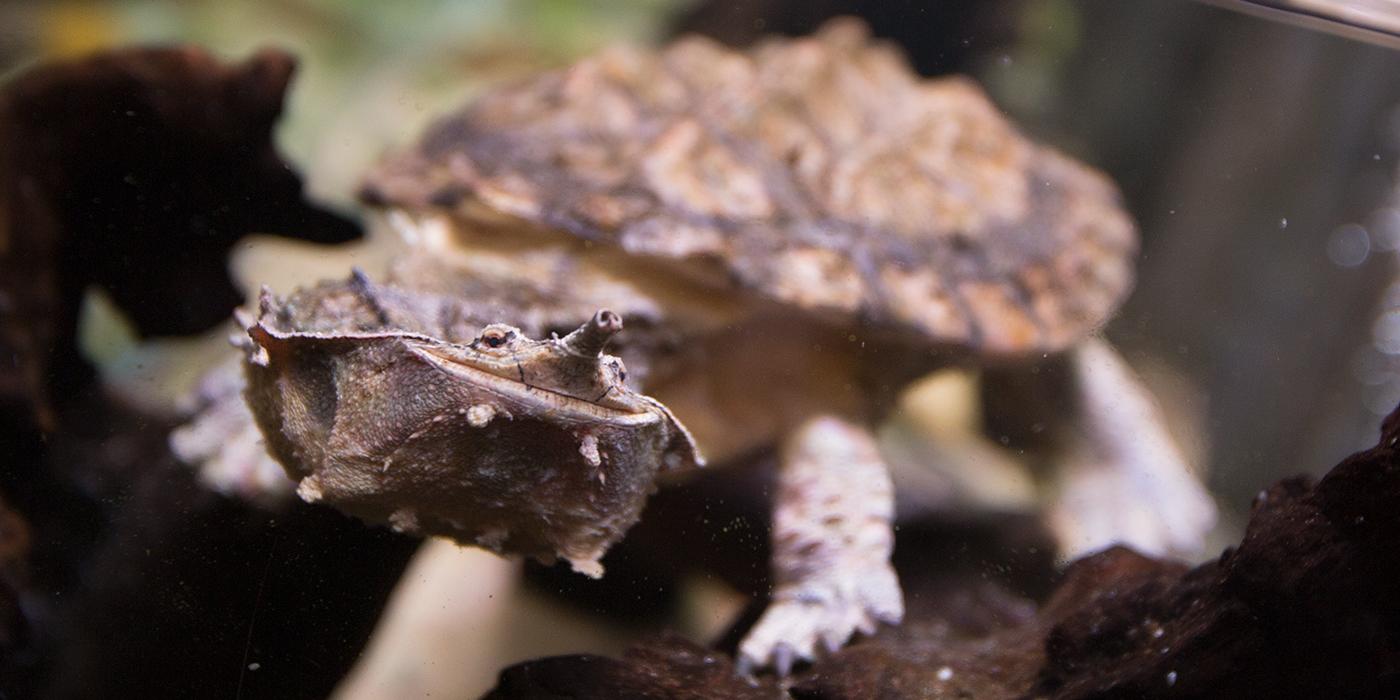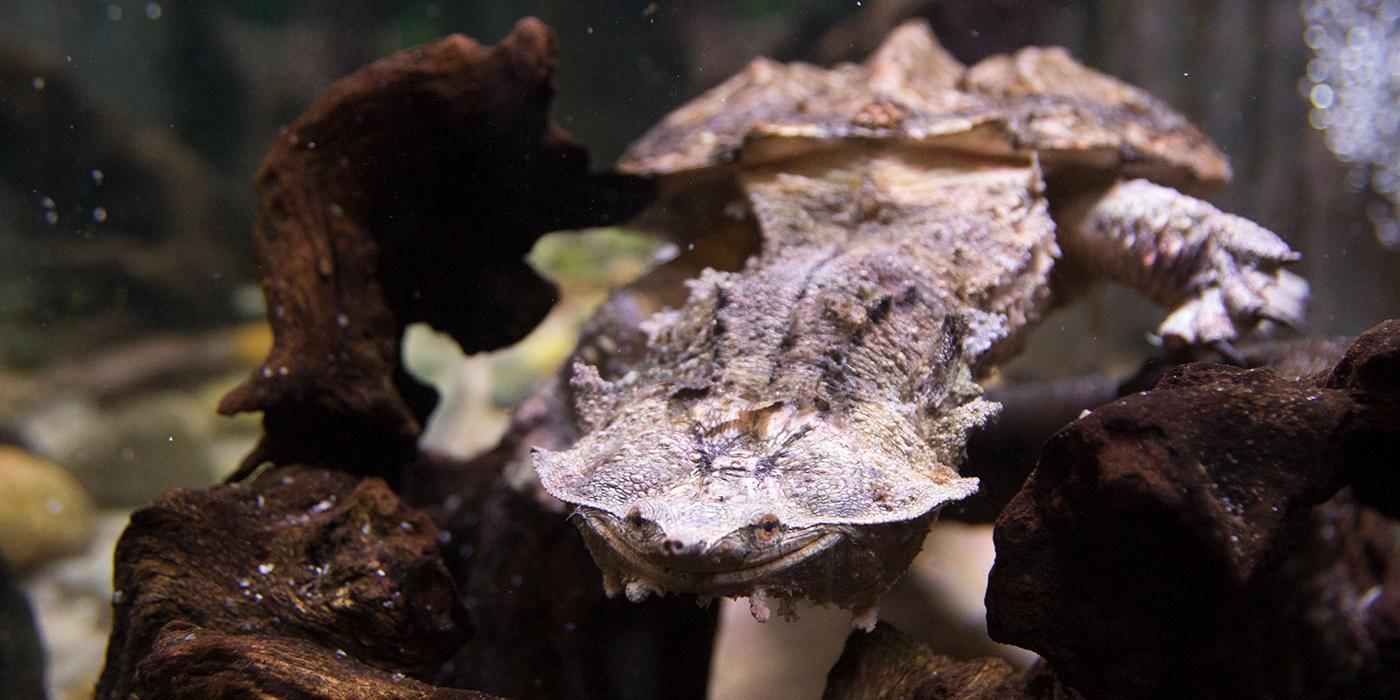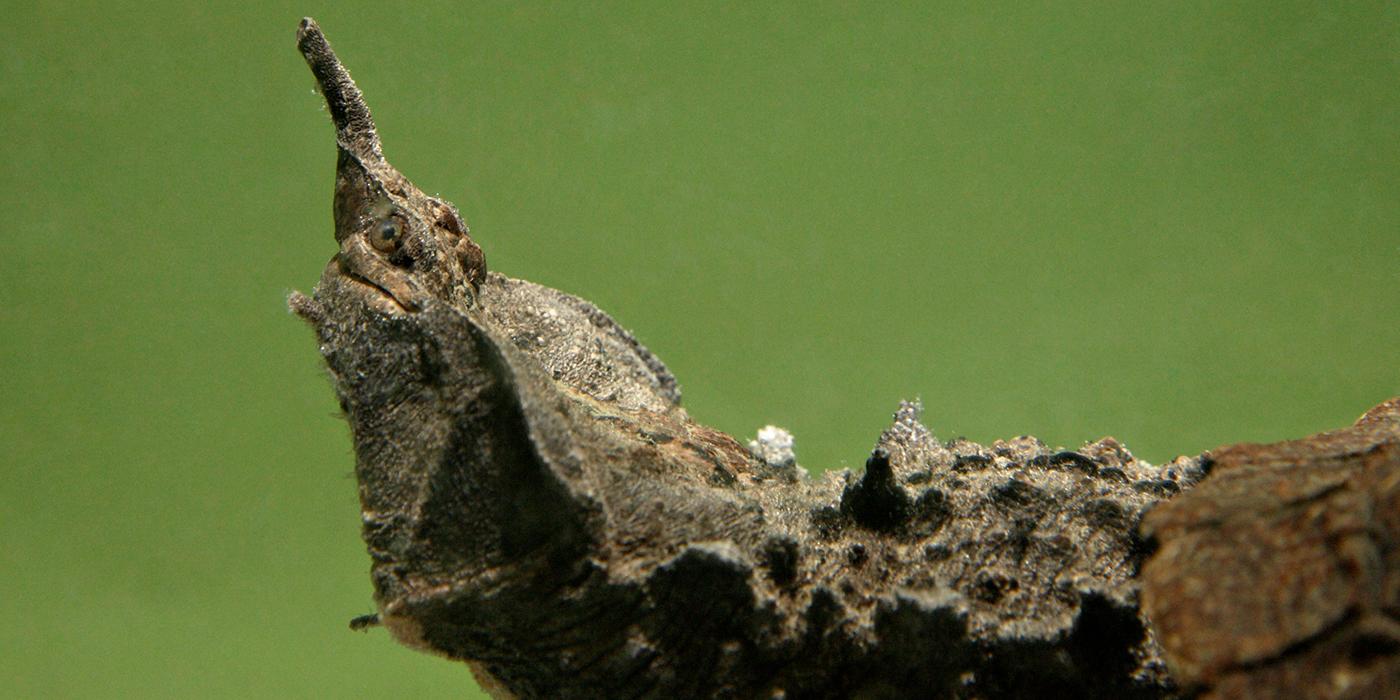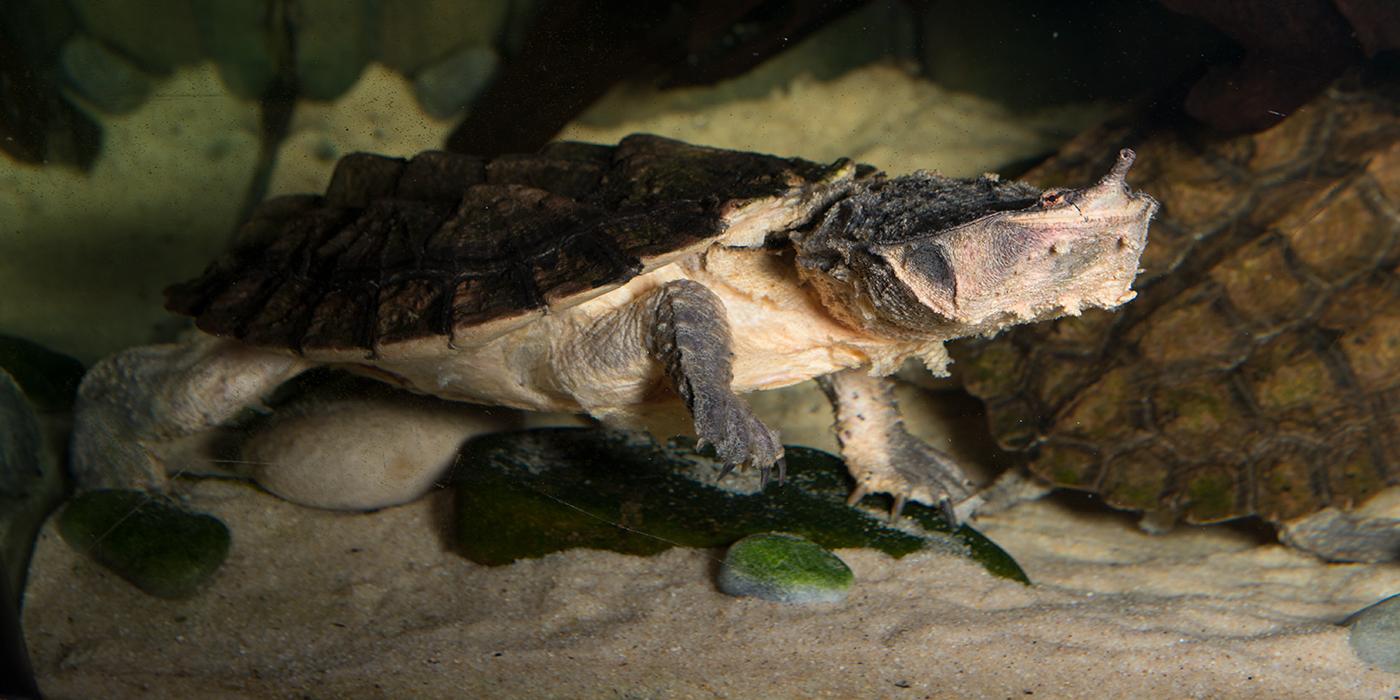Physical Description
One of the matamata turtle's most prominent features is its carapace, or shell. The carapace is not only large but also rough and knobby with what look like spherical cones projecting from it. These bumps are the result of three keels, or ridges, that run from the front to the back of the shell. The costal scutes — the scutes that run alongside those in the center of the shell — are conical with well-marked concentric growth rings.
The matamata turtle's neck is wide, flattened and covered with warts, skin fringes and ridges. Its small eyes are nested at the sides of its large, flattened triangular head, and it has a wide mouth and long, tubular snout. That snout is used like a snorkel, minimizing the turtle's movement as only the tip of the snout needs to emerge from the water for the turtle to breathe.
Matamatas have extremely poor eyesight, but a number of other sensory aids allow them to detect movements in the murky substrates they inhabit. Fleshy flaps extend from the sides of their triangular head, as well as along the neck, which is covered with bumps and ridges. Those skin flaps help camouflage the turtle and contain nerves that respond to stimuli, such as the vibrations caused by the nearby movement of potential prey. Tubercles near the corners of the mouth and neck, as well as barbels on the chin, also reportedly have sensory nerves. The turtle's ears are large and extremely sensitive to sound.
All of the matamata turtle's digits are webbed. Its forelimbs have five claws, while its hind legs have four. Its legs are small with papillose skin and studded scales. Its tail is also papillose, short and pointed.
The shell and neck of a juvenile matamata turtle is a dark brown to mahogany, while the plastron (or underside of the shell) is usually a bright salmon color. As they age, the salmon color fades into yellows and browns, and the throat transitions from a reddish-brown to a tan or brown.
Matamata turtles exhibit some sexual dimorphism, or variation in appearance between male and female. Males have thicker tails than females, as well as concave plastrons. When the turtle's tail is extended, the male's vent, or anal opening, is beyond the posterior edge of the carapace. The female's vent is under the edge of the carapace.
Despite being an aquatic species, matamatas are not well adapted for swimming in open water. They are better suited for walking the muddy beds of shallow pools of water, among leaf and plant debris. Hatchlings and juveniles can swim awkwardly, but adults rarely leave the bottom of shallow pools and streams.
Size
This turtle's impressive shell can grow to nearly 45 centimeters (about 1.5 feet) and weigh 17.2 kilograms (38 pounds). That's about the weight of an average 4-year-old child!
Native Habitat
Matamata turtles are found throughout the Amazon in northern South America, including Venezuela, Brazil, Peru, Ecuador, Colombia and Bolivia. They are also found on the island of Trinidad.
They are primarily aquatic and prefer the soft, muddy bottoms of slow-moving, shallow bodies of water, such as streams, swamps and marshes. They may also inhabit the brackish waters of the lower Amazon basin.
Food/Eating Habits
Matamatas are carnivorous bottom feeders with a unique predation method that involves "vacuuming" up small fish and invertebrates. They remain largely motionless and camouflaged in the muddy waters they inhabit, which allows them to ambush their prey.
At the Smithsonian's National Zoo and Conservation Biology Institute, these turtles eat a variety of fish, including smelt.
Sleep Habits
Matamata turtles are nocturnal.
Reproduction and Development
A male begins the courting process by extending its head toward a female and opening and closing its mouth. It also hyperextends its hind legs and moves the lateral flaps on its head.
Nesting season occurs from October through December. Females build their nests in vegetation near the edge of a forest. They typically lay 12 to 28 eggs, which have a long incubation period of about 200 days.
Conservation Efforts
Matamata turtles are not listed on the International Union for Conservation of Nature's Red List or under CITES. They are listed as near threatened on the Colombia Red List.
This species was previously captured for meat. Today, however, other turtles are considered to be more desirable food sources. The matamata's largest threat is collection for the international pet trade. This unique turtle is especially sought after by hobbyists in Europe and the United States.
The exportation of matamata turtles is banned in Colombia, Venezuela and Brazil, and populations would greatly benefit from regulations on international trade. Additionally, the effects of climate change and habitat degradation should be monitored.
Help this Species
Choose your pets wisely, and do your research before bringing an animal home. Exotic animals don’t always make great pets. Many require special care and live for a long time. Tropical reptiles and small mammals are often traded internationally and may be victims of the illegal pet trade. Never release animals that have been kept as pets into the wild.
Share the story of this animal with others. Simply raising awareness about this species can contribute to its overall protection.
Smithsonian's National Zoo and Conservation Biology Institute. (n.d.). Matamata turtle. Retrieved November 30, 2025, from https://nationalzoo.si.edu/animals/matamata-turtle
Animal News

Giant Panda Qing Bao Gets a Checkup ›

7 Spooktacular Animal Facts for Halloween ›




